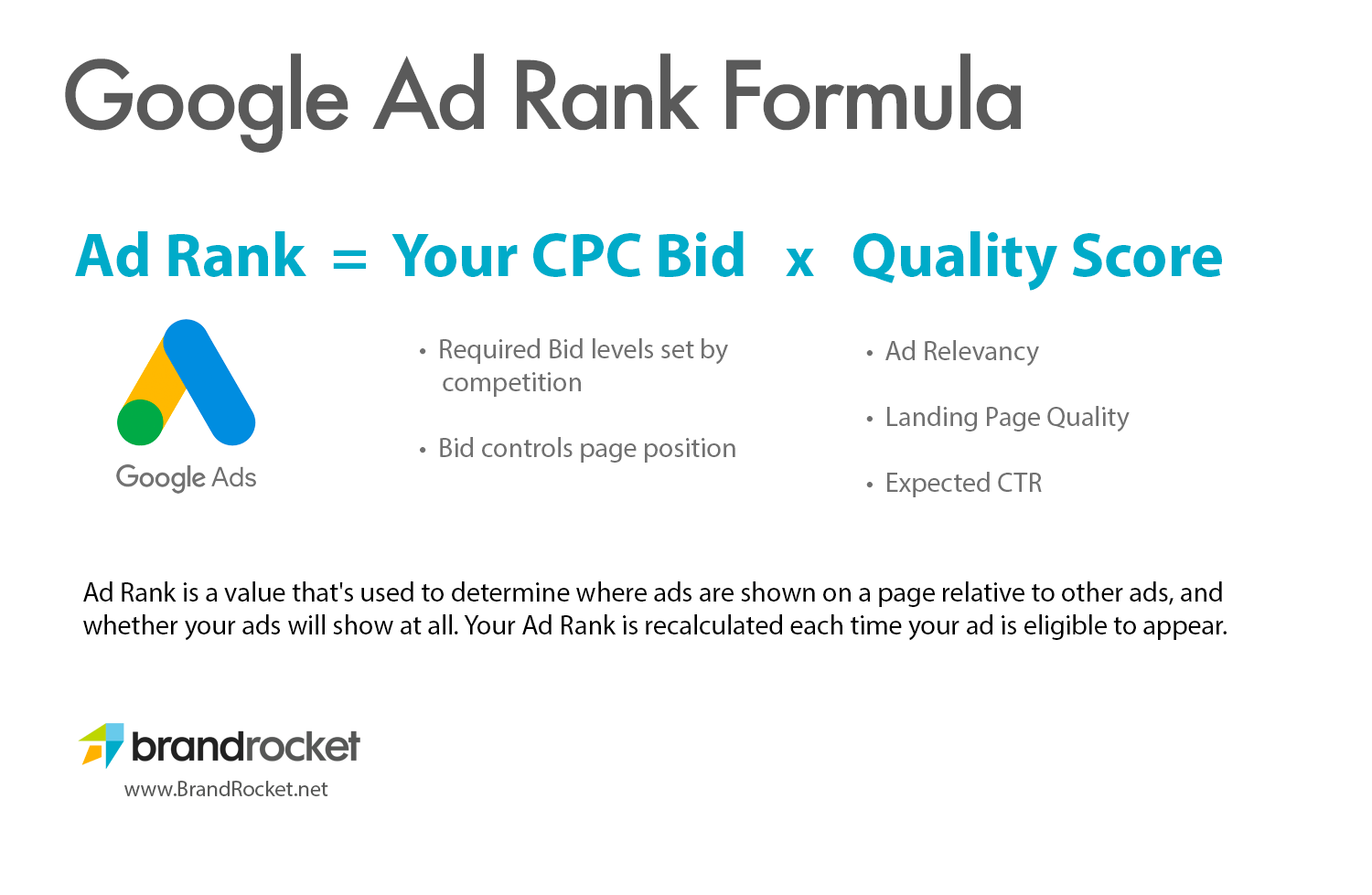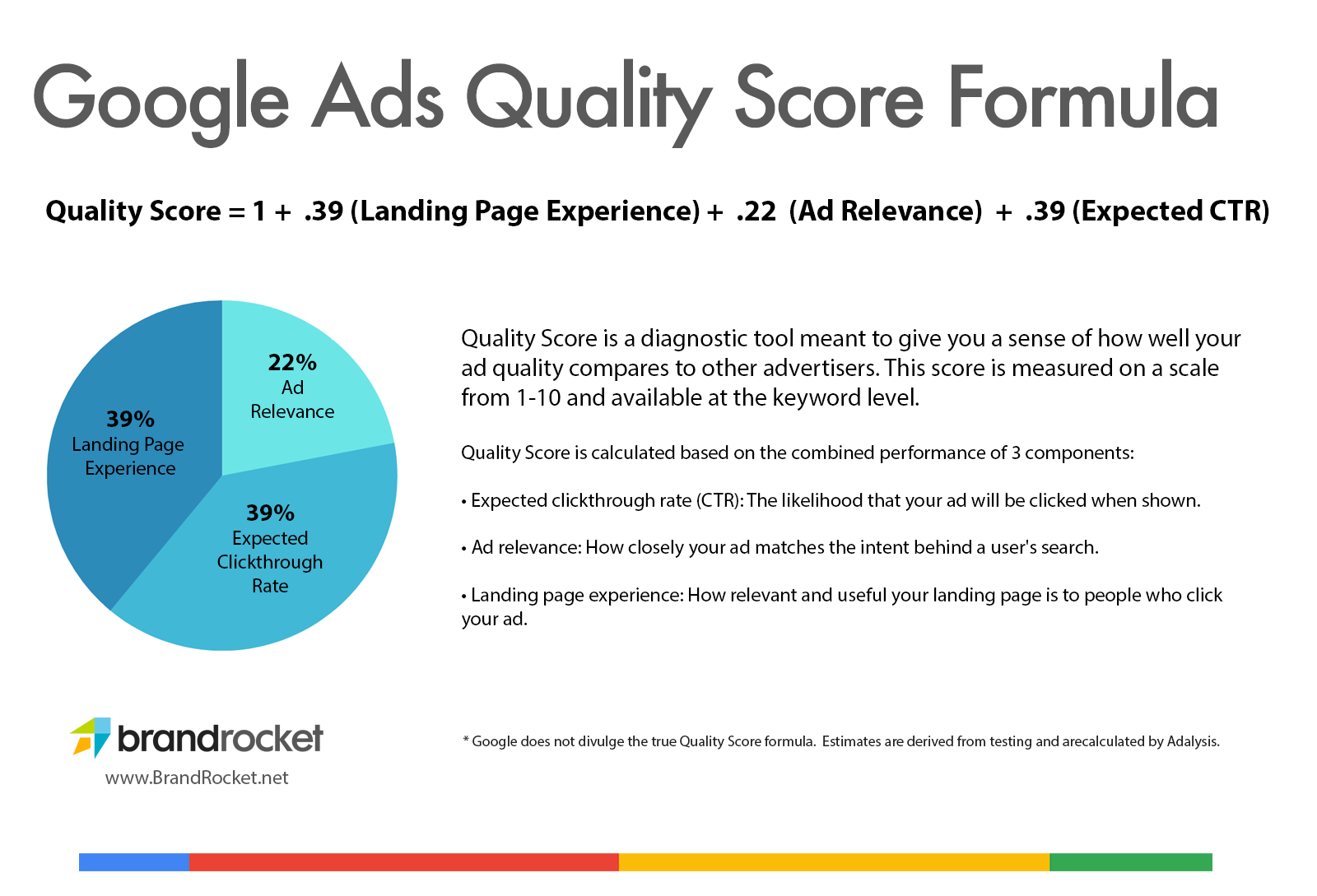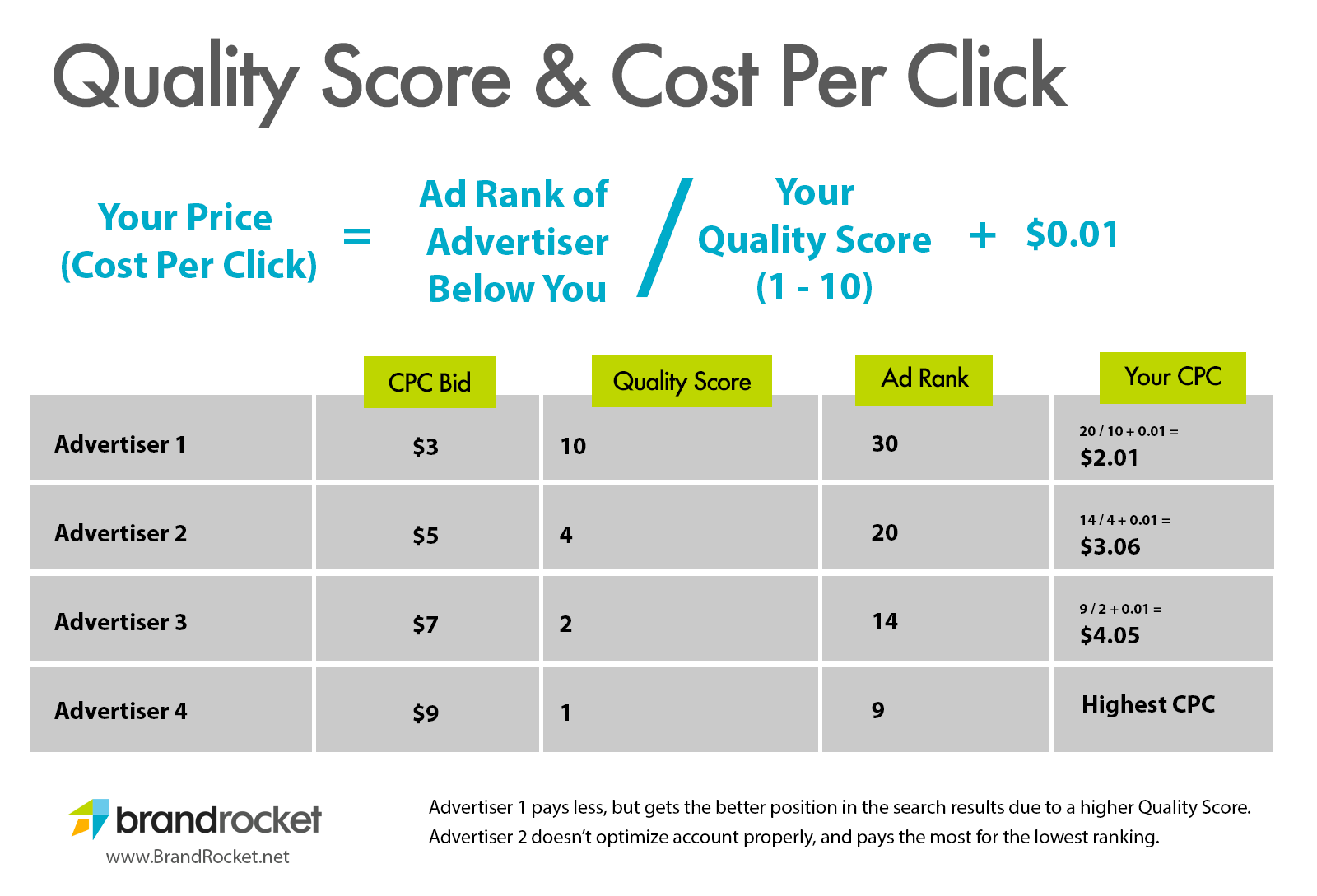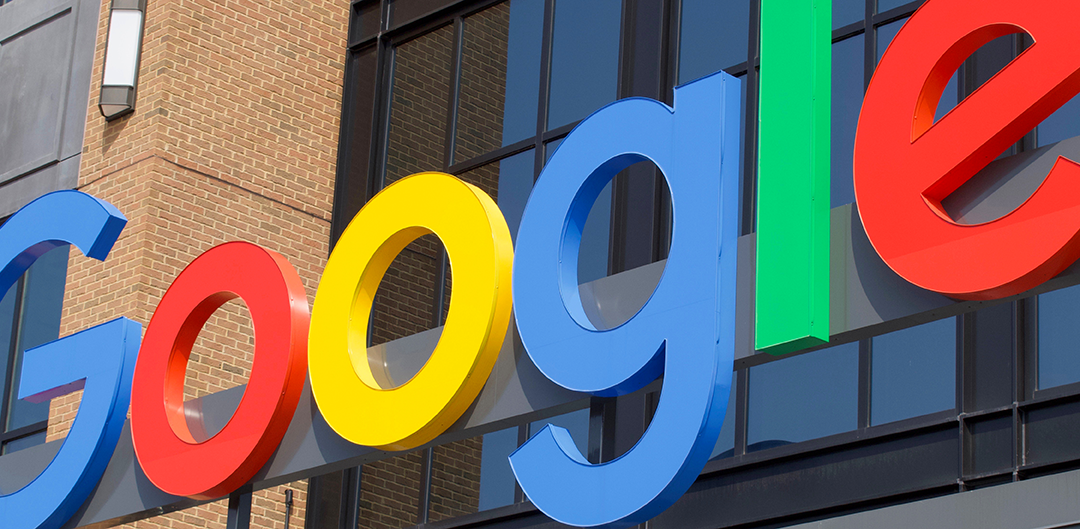Google Ad Rank Formula
The Google Ad Rank formula is a secret algorithm that determines where your ad will appear on Google’s search results page. The higher your keyword is ranked, the better your ad will perform.
The exact formula for calculating Ad Rank isn’t public knowledge, but we do have some insight into how it works. Let’s take a look at these factors and how they affect your ad position:
Quality Score – Quality score is an aggregate score made up of several individual metrics (Ad Relevance, Landing Page Experience, Ad Copy). Each one has an equal weight in determining your overall quality score for an individual keyword or group of keywords. Higher quality scores mean you’ll pay less per click and your ads will show up higher in the search results pages. Lower quality scores mean you’ll pay more per click and your ads may not show up at all!
CPC Bid – This is how much you’re willing to pay when someone clicks on one of your ads. The lower this number is set, the higher your ad rank will be because there are less bids competing for impressions from searchers at any given time; you’ll be able to get more “at bats” against other advertisers competing for the same keyword(s).

Quality Score Components – Why They Matter
Your quality score is quite literally the most important factor in bringing your Google Ads campaign to life. The more you manage to achieve a higher quality score, the better your chances of seeing more traffic at a lower cost per click.
Quality Score is a diagnostic tool meant to give you a sense of how well your ad quality compares to other advertisers.

What is Quality Score?
Google Ads Quality Score is a scoring system that helps advertisers determine how well their ads will perform in Google Ads search results. The higher your Quality Score, the less you’ll pay for each click on your ad.
Quality Score is calculated using a number of factors — including your click-through rate, ad relevance and expected clickthrough rate — to help predict how relevant your ad will be to potential customers.
Google uses these signals to determine the cost of your ads, which can vary depending on the type of ad you’re running. For example, if you have a low Quality Score, Google may charge more per click because they believe your ad isn’t likely to result in many conversions (for example, someone clicking on it).
Ad Relevancy
Ad relevancy is a component of quality score, and it’s one of the most important factors in determining whether your ads will be approved or disapproved.
Ads that are relevant to what people are searching for are more likely to get clicked on, which means you’ll be able to spend less money on Google Ads clicks and optimize for conversions instead.
The best way to promote ad relevancy is by creating ads that match search queries exactly. Make sure that your ads are relevant by building out ad groups with tight keyword themes. For example, instead of having one ad group with all of your products in it, break them down into smaller groups based on products that go together.
Expected Click-Through Rate (CTR)
The expected CTR is a predicted metric for how likely someone will click on your ad when they see it in their search results. It’s based on several factors like the keyword, ad copy and landing page, as well as historical data about similar ads. The expected CTR determines how much you’ll pay for each click on your ad.
Why does Google use an expected CTR?
The goal of the Google Ads quality score system is to find the most relevant ads for users based on the keywords they’re searching. By using an expected CTR as one of its components, Google can give higher quality scores to ads with high clickthrough rates while penalizing those with low ones. This helps ensure that high-quality advertisers don’t get penalized by losing traffic due to low CTRs caused by factors beyond their control (like poor landing pages).
Landing Page Experience
Landing page experience is one of the most important factors in determining how well a click on a search ad will convert. It’s also important for the overall quality score of your account because a good landing page experience can help prevent your ads from being disapproved or penalized.
A high-quality landing page experience means that users have a great experience once they click on your ads, which leads to higher conversion rates and lower bounce rates. A low-quality landing page experience means that users are less likely to convert on your site, and more likely to bounce right away.
There are many factors that affect a user’s perception of your site as high quality, but here are some things you should keep in mind:
Make sure the copy on your landing page matches what was written in the ad copy that brought them there (if not, they might be confused about why they were brought there)
Make sure the design matches what was written in the ad copy (if not, it might look like an unrelated ad was placed on their browser)

In Closing
All of the above is just scratching the surface. There are many other factors to account for when it comes to ads and bids. However, if you can at least determine a rough estimate of your ad rank and quality score, you’ll be in much better shape than most other advertisers. Consider taking time to familiarize yourself with Google’s different ad campaigns as well, including some of the new changes that have been introduced in recent months.

